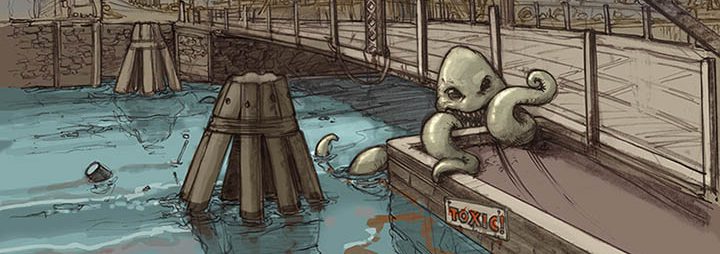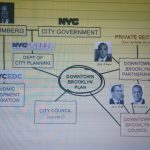Author Archives: Rumana
LibraryReport2_Revision
siteReport_3
Library Report 2
Blog#4_Jacobs vs Moses
We watched a part of a movie called Citizen Jane: Battle for the city by Matt Tyrnauer. The movie shows the legendary battles over the shape of New York City between the writer and activist Jane Jacobs and the urban-renewal “Master Builder” Robert Moses.
From previous discussions in the class and also from the movie we came to know that Jane Jacobs was a journalist, author, and activist who lived with his architect husband in the SoHo area of the New York City. She is best known for her influence on urban studies, sociology, and economics. Prof. Joelson mentioned a book called The Death and Life of Great American Cities that had raised the question whether urban renewal respect the needs of most city-dwellers. On the other hand, we have come to know Robert Moses as one of the most polarizing figures in the history of urban development in the United States.
In the movie we see the constant conflict in the ideologies of Ms. Jacobs and Mr. Moses. Not only the ideologies were different, but the way of implementing things were very different too. One of the factors that struck a lot was the “Ribbon Cutting ceremony” of Mr. Robert Moses just like any other inaugural event as opposed to Ms. Jacobs’ “Ribbon Tying Ceremony. The fact that the development of New York City was a misinterpretation of LeCorbusier left me awestruck. The city that I had always to come to from my childhood was built out of a misinterpretation? That upsets me a little. Moses prioritized cars and wanted to build highways disregarding the neighborhoods while Jacobs acknowledged the importance of the sidewalks, the people, the community that essentially made up the city. She emphasized that although a lot of people on the street may look chaotic, but there is an order of complexity in it. A very systematic, easy to understand/navigate roadway system might look fascinating on a superficial level, but it only makes a dead city. Living cities are and will always be congested. This is what helps to create the theater of life in the cities. An old lady can spend all her day just by looking at the chaotic yet lively city street as opposed to that of an overtly organized highway.
In the movie Jane Jacobs introduced sociological concepts such as “eyes on the street” and “social capital”. She said deserted streets are unsafe. Not only officers in uniform can keep the citizens safe but actually, “New Yorkers keep New York safe” If we think of it with any of the personal experiences we might have had, we always tend to walk on the side of the streets that has enough lighting, shops, and people, because we know when we are at a public space with a lot of people no one will be that brave to attack you. We unknowingly rely on the other people on the street for our safety. Carol Geitzer, urban activist and a friend of Jane Jacob said, “The challenge is to build the city in which not just the rich live safely and nobly.” And I cannot have agreed more.
I agree to most of the ideals of Jane Jacobs. But I still think the movie was a little biased towards Ms. Jane Jacobs, and assumed a black-and-white view of urban neighborhoods, that they are either Jacobsesque or Moses-like, messy and teeming with life or shiny and homogenized. And the movie slightly inclines to the fact that anything shiny and homogenized is dead or not very acceptable by the people of the community. But I don’t think that is always the case. Homogenized developments can also be beautiful; can also be lively and engaging. While I agree, Jacobs’ theories offered a brilliant guide to protecting existing neighborhoods; I don’t think it always helps us to design anything new from scratch. By that I don’t necessarily mean we want New York City to look like Dubai or Los Angeles in anyway, I understand the fact that situations, environment everything is different but still we do need to build new developments in the city but also keeping community intact. I understand it is complicated, but I have a firm belief it is possible to “build NYC like Moses but keeping Jacobs in mind”.
Library Visit
Walking Tour with GCC representative at the Gowanus
Blog#3: Trapped in the Treadmill of Change
On September 19, we watched a documentary in the class. The name of the film is My Brooklyn, directed by Kelly Anderson and produced by Allison Lirish Dean. This movie mainly focuses on sensitive study of gentrification and how it affected the people negatively. In this blog I will discuss what I felt watching the film and why I think gentrification/zoning is not the bad guy.
The story begins when Anderson moves to Brooklyn straight out of college following her dream of becoming a filmmaker in the 1980’s. She initially came to the place attracted by its cheap rents and diverse culture. But after Bloomberg held the office in 2001, a massive speculative real estate boom was noticed, that was rapidly altering the neighborhoods she called home. From six stories buildings, construction of thirty stories buildings had started. The film shows the rising conflict over the entry of the chain stores and loss of community values. But the real conflict becomes prominent when development officials announce a controversial plan to tear down and remake the Fulton Mall, popular and bustling African-American commercial district near Anderson’s apartment. As the local debate over the Mall’s future intensifies, deep racial divides in the way people view neighborhood change become apparent. All of this pushes Anderson to confront her own role in the process of gentrification, and to investigate the forces behind it more deeply. She thought she was a “gentrifier” because she was a highly educated white woman. I really found this idea a little weird. I found this weird because she was also suffering the same way the other residents of the community were. She was also pushed out of the neighborhood because of rising rents. I think this idea of hers is inspired by the stereotypical concept of white being rich and blacks being poor.
Although she considers herself one of the reasons behind gentrification, I think the main forces behind it were the private corporations in collusion with the city officials. Zoning (Zoning is the way the governments control the physical development of land and the kinds of uses to which each individual property may be put) is not essentially the villain. Zoning laws typically specify the areas in which residential, industrial, recreational or commercial activities may take place. But it might seem to play the role of a culprit when “Follow the money” becomes the priority and the city officials treat the government as a private corporation, the residents as clients and the city itself as a product that needs to be advertised and marketed (as if the city was a new Iphone X!) However, if the developers are making the luxurious buildings and making profit out of it, then that means there are people who are actually buying those posh condos. There is the supply because there is a demand. People are buying these apartments because of course they have money; but more so because that is the new trend. It probably would look “cool” if you could afford to live in that apartment. It’s like you have an iPhone 6 but you want the brand new iphone X, not because your phone doesn’t suffice your needs, but because it’s cool to try a new thing! This is the part from the richer side, but the rest of the community either is forced to move out or upgrade their style of living as well. Like it or not, they are trapped in the gentrification bubble.
Some of the issues raised through this film are: affordable housing, commercial district, zoning, gentrification and displacement, commercial district, redlining, public-private partnerships and dealing with the problems by community activism. Although these concepts are very complicated and overlapping, the director does a brilliant job by the graphical presentation of how the Downtown Brooklyn was planned.
After watching the film and trying to analyze the whole procedure, I think there are certain tools that an individual/community should deploy to address the gentrification issue. Tools like making stricter rent laws, encouraging affordable housing, playing ahead of the game by planning well, getting involved with the local politics and demanding for more transparency of development procedures and mostly by strengthening the community through education. And this is where I think FUREE needs to be mentioned and appreciated. Once we have a strong and united community, a responsible government representative (who will represent the people not the corporation) and hopefully a more humane developer, a balanced gentrification might be attainable.
[Even after finishing the blog, I still wonder where did Mr. Jeff Garguilo, the owner of the Bagel Guys go?]
Diving Deep into the Gowanus Canal with Joseph Alexiou
Last Thursday on 09/14 we had the author, journalist, historian and a licensed tour guide, Mr. Joseph Alexiou as our guest speaker. Mr. Alexiou, the author of Gowanus: Brooklyn’s Curious Canal, presented in such a way that I felt he was leading a field trip to the Gowanus even when sitting at the library classroom 543! He primarily emphasized on the history of the Gowanus canal and the surrounding neighborhood. In this blog I will focus on two of the fascinating things that Joseph mentioned during the class: the real estate history behind making the canal and the cleaning of the canal.
From the field trip and Joseph’s presentation we came to know that originally there was a tidal estuary which was named Gowanus Creek by the native settlers. Joseph mentioned some of the native groups like Lenape tribe, Canarsee, the Algonian-speaking Delaware Indians who used the creek for transportation, oysters(our guest mentioned that the tasty foot long oysters became so famous, later in 1840 they had their image on the Brooklyn Daily Eagle!), baby whales, crab, fish, etc. During his presentation he often mentioned “All New York stories are real estate stories”. And I think this is so true. These real estate stories started as early as 1639, three years after the Dutch purchased the area near the Gowanus Bay. In the 19th century the Bay was converted to a canal to promote commerce. This canal accommodated 26,000 vessels that ran up and down. Brownstones were placed on barges and shipped through the canal to create what now is famous as the Brownstone Brooklyn. Heavy industries like that of coal gas manufacturing plants, oil refineries, machine shops, chemical plants, and tannery became concentrated in the area. Joseph gave a detailed description on how the canal was planned to be built by several developers like Daniel Richards, David Doughlass and how based on “Follow the money” concept, the plan of Edward C. Litchfield got implemented. I was awestruck to know 3rd Street was actually Litchfield’s driveway! Thus he placed street lamps at a distance of only 50 feet from each other, while the standard is that of 100 feet. Joseph showed us some archival illustrations as well. Speaking of the Dutch (Netherlands meaning low land) we come to the making of the mills. Our guest speaker gave a brief but interesting account of the mill ponds created at the time. He also mentioned the first “skyscraper” of Brooklyn that is the Old Stone House.
The canal was so close to the sea-level that the tides of the bay forced salt water to mix with the fresh water, hence creating a brackish mix of water. However, with the flourishing of the area, there was a need to create a sewage system for the area as well. So the plan that came up is the Combined Sewer System. Combined sewer systems are sewers that are designed to collect rainwater runoff, domestic sewage, and industrial wastewater in the same pipe. Most of the time, combined sewer systems transport all of their wastewater to a sewage treatment plant, where it is treated and then discharged to a water body. Although the combined sewage idea wasn’t a great one in this case, as the only water treatment plant would be throwing the contaminated water into salt water.
As a result of poor sewage and prolonged contamination, the canal has now become the Eerie canal, and has been ill famous as the most polluted canal. Joseph said that in an average the raw sewage that was dumped into the canal is about 400 million gallons and also that the entire bed of the canal has been contaminated with toxic waste. Coal tar, one of the biggest causes of pollution is still under the public pools, parks and houses of the area.
Even in the cleanup process of the canal the well-known “Follow the Money” concept intervened. Instead of declaring Gowanus the federally super funded site, Mayor Bloomberg chose to make private funding for the cleanup. This is primarily because the City would have had to pay a lot more if it was federally funded by the EPA as compensation for polluting it.
The process of dredging the “lavender lake” is debatable. In conclusion, what I understood after Mr. Alexiou’s presentation is that from the early Dutch settlements in the New Amsterdam (New York in 1626) till date, the Gowanus remains a subject undergoing intense study.






